Comparing Handfuls 1st Grade
 All Classroom Lessons
All Classroom Lessons
A Lesson for First Grade
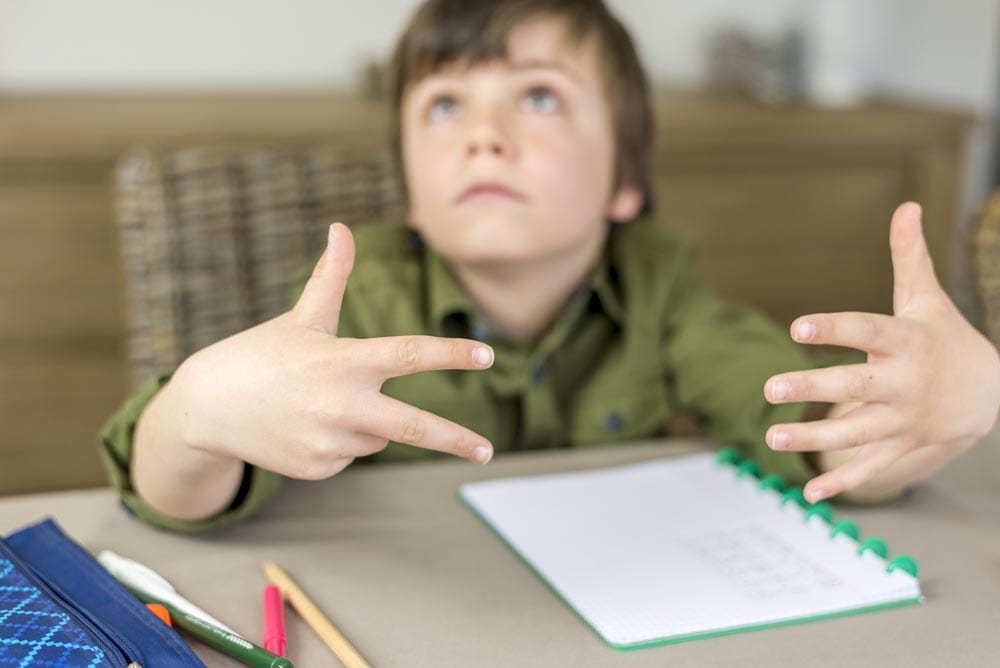
by Leyani von Rotz and Marilyn Burns
Learning the meaning of the less than, greater than, and equals signs is important to children’s numerical and algebraic understanding. In this lesson, first-grade children use the symbols >, <, and = to compare numbers. This activity appears in Leyani von Rotz and Marilyn Burns’s new book, Lessons for Algebraic Thinking, Grades K–2 (Math Solutions Publications, 2002).
I gathered the children on the carpet and said, “Today we’re going to learn a new partner activity using Snap Cubes called [ital] Handfuls.” [ital] I asked Monique and Maurice to come up and help me show the class how to play the game.
“Each of you is going to take one handful of cubes and shake off any extras,” I explained. “Then we’re going to compare your handfuls and figure out if Monique has more cubes than Maurice, fewer cubes than Maurice, or the same number of cubes as Maurice. Does anyone have a prediction for how many cubes Monique or Maurice might be able to hold in a handful?”
“I think Monique can hold ten cubes,” Graham said.
“I think Maurice can hold twenty cubes because he’s bigger,” Manjot commented.
“Let’s find out,” I said. Monique and Maurice each took a large handful and held them out to show the class.
“Raise your hand if you think Monique has more cubes than Maurice,” I said. Many hands went up. “Raise your hand if you think Monique has fewer cubes than Maurice,” I continued. Many of the same hands went up. “Raise your hand if you think Monique has the same number of cubes as Maurice.” Now many students were trying to count the number of cubes in each student’s hand.
I said, “If we count the cubes, will it be easier to answer my questions?” Many students nodded.
I turned to Monique. “I’d like you to snap your cubes together into a tower as we count with you.” Monique snapped them together. She had nine cubes.
“I remember that Graham predicted that Monique would have ten cubes. If we look at the one to one hundred chart on the wall, is ten close to nine?” I put a finger on 10 and another finger on 9.
“Yes!” several students said.
“Graham’s prediction was very close to the number of cubes in Monique’s handful, so that makes it a good prediction,” I explained. It’s important to help students understand that the goal of estimating is to get close to the actual number.
Next, the class counted out loud as Maurice snapped his handful of cubes into a tower. “I’ve got eight!” Maurice announced.
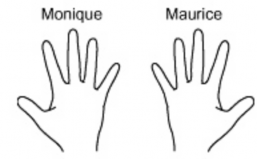
“You’re going to play this game several times, so we need to write something down to help us remember what happened. I’m going to draw two hands on the board, one for Monique and one for Maurice.” I drew outlines of two hands on the board and labeled them Monique and Maurice.
“What number should I write in Monique’s hand?” I asked. “Nine,” several students said.
I wrote 9 in Monique’s hand on the board, and everyone agreed that I should write 8 in Maurice’s hand.
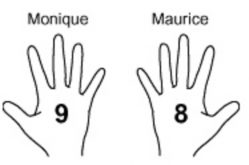
I directed Monique and Maurice to stand their towers on the chalkboard tray next to each other so that we could compare them. I made sure that Monique placed hers on the left so that the towers were in the same order as the numbers on the board. I then asked for a show of hands for who thought Monique had fewer cubes than Maurice, more cubes than Maurice, or the same number of cubes as Maurice.
“Who would like to tell me what you think and why?” I asked. “Monique’s tower has got one sticking up,” Lauren said.
“So do you think she has more cubes than Maurice?” I asked. Lauren nodded.
I then said, “Let’s look at the numbers I wrote in the hands. Is nine more than eight?” “Yes!” several students responded.
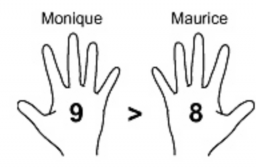
“So now we need to write something down so that we can show what we found out. Here is what mathematicians write to say ‘nine is more than eight,’” I said and wrote a greater than sign between the two hands.
I pointed to the sign and explained, “This sign is a shortcut way to write ‘more than.’ To me it looks like a little mouth, open wide because it’s hungry and wants to eat, and it’s trying to eat the amount that is greater. This number sentence says, ‘Nine is more than eight.’ Or we could say, ‘Nine is bigger than eight,’ or ‘Nine is greater than eight.’” I posted a sheet of 9-by-12-inch construction paper, wrote the greater than sign, and listed:
>
is more than
is bigger than
is greater than
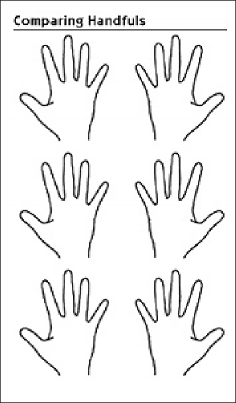
“You can use the poster to help you when you play the Handfuls game with each other,” I said. Then I showed the children the worksheet I had duplicated.
“When you and your partner play Handfuls, you’re going to record on this paper,” I said. “You and your partner each write your name on one side of the paper.” I recorded 9 and 8 on the worksheet to represent Monique’s and Maurice’s handfuls and inserted the greater than sign.
“What if the next time Monique and Maurice play, Monique has six cubes and Maurice has nine? Then who would have more?” I snapped together towers, drew two more hands under the two on the board, and wrote 6 in the left hand and 9 in the right.
“That one is bigger,” Alvin said, pointing to the tower of nine.
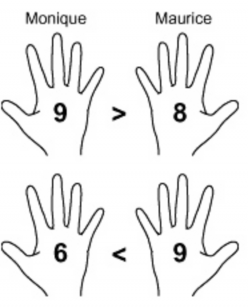
“Now we need to write something in between the hands to record what we found out,” I said and wrote a less than sign.
I posted another sheet of construction paper, wrote the less than sign, and listed:
<
is less than
is smaller than
Then I said to the students, “What if this time Monique picked up seven cubes in her handful and Maurice picked up seven cubes in his handful?” I stood two towers of seven cubes next to each other. “What do you notice?” I asked.
“They’re the same!” several students said. I drew two more hands on the board under the other two sets and wrote a 7 in each.
“So I need to write something between the hands that tells us that they have an equal number of cubes,” I said and wrote an equals sign between the hands.
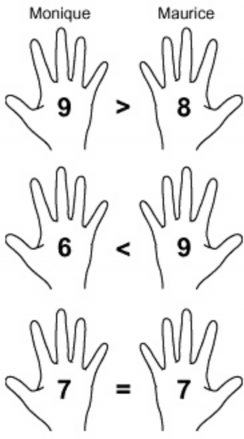
“Here’s how we can read this sentence,” I said. I pointed to the numbers as I read, “Seven equals seven. Or we could say, ‘Seven is the same as seven.’” I posted another sheet of construction paper and recorded:
=
equals
is equal to
is the same as
“Now it’s time for you to play Handfuls, ” I said. Before I put out the bins of Snap Cubes, I made sure that the students had written their names on the same side of the paper as they were sitting to avoid confusion. As I put down the cubes, I pointed out who should take a handful first by pointing to the name at the top left of the page. As students got to work, I circulated, clarifying directions and observing as students counted, compared, and recorded. Many students referred to the posters on the board before writing < or > on their papers. Some also looked at the sample rounds I had recorded for Monique and Maurice. I walked around the classroom, looking and listening for how students were thinking about counting and comparing numbers.
“Look! I got seven again,” Manjot said on the second round of her game with Manuel. “I won again!” I heard Jazmin say.
The children stayed involved for the rest of the period, and then I gave directions for cleaning up. We repeated the activity on other days.
From Online Newsletter Issue Number 8, Winter 2002–2003

Comments